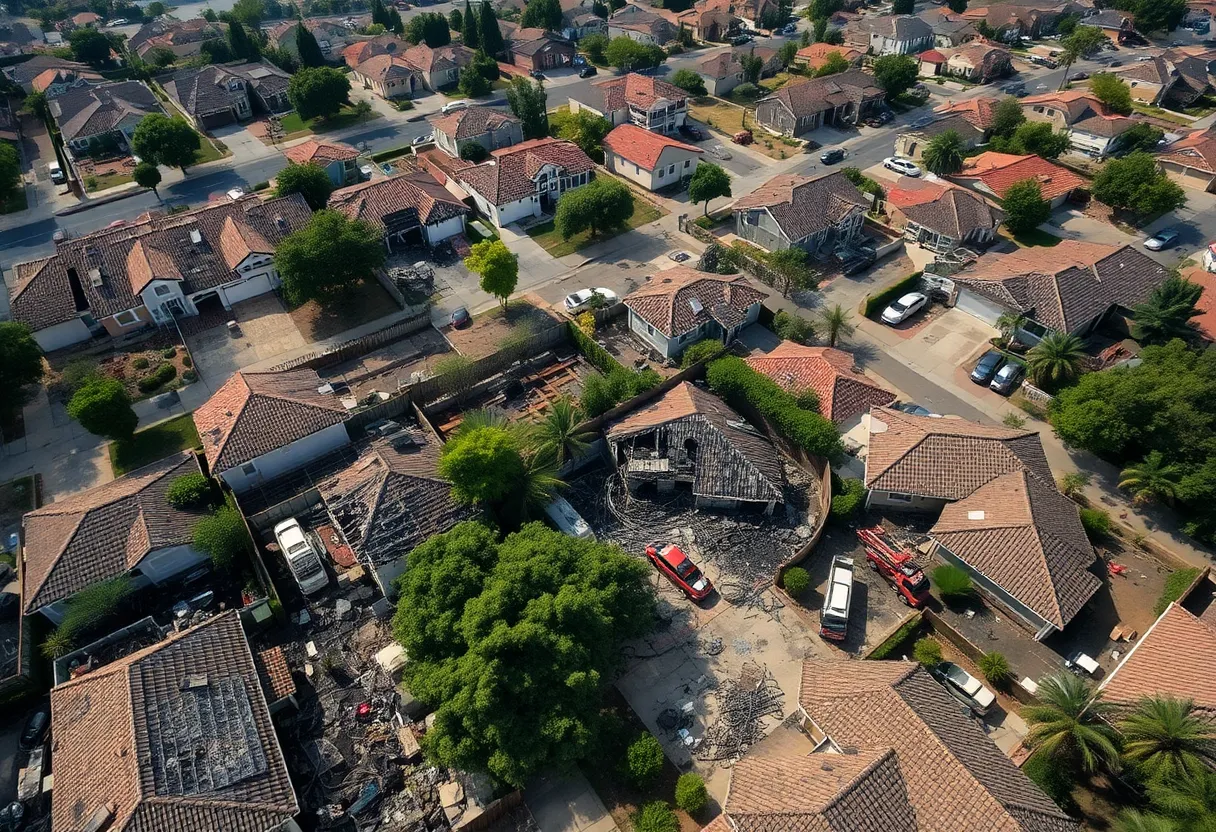News Summary
The aftermath of the January wildfires reveals contamination concerns as residents face toxic threats in their homes, prompting calls for government intervention.
Ongoing Cleanup Efforts Unveil Hidden Threats Following January Wildfires
The aftermath of the devastating January wildfires continues to unfold in communities like Altadena and Pacific Palisades, where the cleanup process is well underway. However, a different battle is brewing as families find themselves unable to return home, encumbered by the presence of carcinogens and harmful toxins lingering in their properties and neighborhoods.
Contamination Concerns Rise
In the Altadena area, over 50 homes affected by the Eaton Fire have been found to contain toxic substances, including lead and asbestos. Community members have begun to take matters into their own hands through a grassroots initiative known as Eaton Fire Residents United, which is actively collecting data on air quality and toxin levels from their neighbors. Alarmingly, results from 57 air quality tests conducted across Altadena, northern Pasadena, and western Sierra Madre indicate that a staggering 98 percent showed positive for hazardous contaminants.
Personal Impact and Financial Burdens
Residents are expressing deep concern about the safety of their homes, especially those situated near burnt structures. One resident reported investing $2,500 for toxin testing after her home tested positive for lead and asbestos, costs that were not covered by her insurance. The presence of these toxins is particularly distressing given that many homes in Altadena and the wider Southern California area were built before the stringent regulations on asbestos were implemented.
Call for Comprehensive Testing and Support
Victims of the Eaton Fire are now fervently demanding that state and county authorities get involved in facilitating more extensive testing for toxic materials. There are increasing calls for affordable guidance on the types of testing available and specific remediation steps for affected families. Local advocates propose that the California Disaster Assistance Act should assist in funding testing for those who are uninsured or under-insured, highlighting the necessity for governmental support in these trying times.
Current Government Efforts
Despite the escalating concerns, it has been revealed that LA County does not track indoor testing of private properties, leaving homeowners to hire certified professionals at their own expense. Several attempts to seek clarity from the California Department of Insurance and the Office of Emergency Services regarding further support and actions have gone unanswered.
Toxic Legacy of the Eaton Fire
The Eaton Fire ravaged over 14,000 acres, leaving behind a toxic legacy that incorporates remnants of everyday chemicals, including lithium batteries that burned during the disaster. According to toxicology experts from UC Irvine, wildfires can produce a plethora of hazardous chemicals linked to severe health issues, including cancer and respiratory ailments. Additionally, data indicates alarming spikes in lead and chlorine levels during the fires in LA County, raising fears that harmful pollutants could spread far beyond the immediate fire zones due to changing wind patterns.
Legislative Advocacy for Improved Monitoring
Local leaders are rallying for enhanced air quality monitoring, insisting on better measures beyond the current practices employed by the South Coast Air Quality Management District. High-profile lawmakers are also collaborating with federal entities to advocate for comprehensive safety monitoring practices. However, fears surrounding proposed federal budget cuts could threaten these initiatives.
Confronting the Fallout
With many residents left to confront the fallout of both the wildfires and the potential health repercussions, the Environmental Protection Agency (EPA) has been tasked with removing hazardous materials from fire-affected properties. Unfortunately, comprehensive air monitoring falls under the jurisdiction of the U.S. Army Corps of Engineers, creating separate pathways for addressing these interlinked issues.
The Future Remains Uncertain
Experts warn that it may take longer than anticipated to fully understand the range of health implications resulting from the Eaton Fire due to complex chemical reactions occurring from the burned materials. Many identified chemicals pose serious risks, potentially leading to cardiovascular problems and respiratory complications.
As efforts to address the environmental fallout from the Eaton Fire continue, the residents of affected communities remain vigilant in their pursuit of justice and safety, determined to emerge from the smoke of this disaster.
Deeper Dive: News & Info About This Topic
HERE Resources
The Arson Fire That Devastated Cleveland’s BYRIGHT Auto Sales
Salisbury Post Office Reopens Following Asbestos Abatement
Florida Jury Determines Brake Grinder Maker Liable for Mesothelioma Case
Financial Planning for Mesothelioma Care
Significant Boost in Compensation for Mesothelioma and Occupational Diseases
Rising Concerns Over Mesothelioma and Asbestos Among Veterans
The Mesothelioma Treatment Landscape: A Surge in Innovation and Hope
Asbestos Found in Raven Hotel Awakens Safety Concerns
New Collaboration Focusing on Asbestos Awareness in Australia
The U.S. Takes a Stand Against Chrysotile Asbestos: A Ban That Affects Thousands
Additional Resources
- NBC Los Angeles: Toxic Air in Altadena Wildfire
- Wikipedia: Wildfires in California
- AP News: California Wildfires and Toxic Ash
- Google Search: California wildfires toxic debris
- Reuters: Clearing Toxic Debris from LA Fires
- Google Scholar: Toxic Debris California Wildfires
- CBS News: EPA and Toxic Debris in LA Wildfire Zones
- Encyclopedia Britannica: Wildfire



















